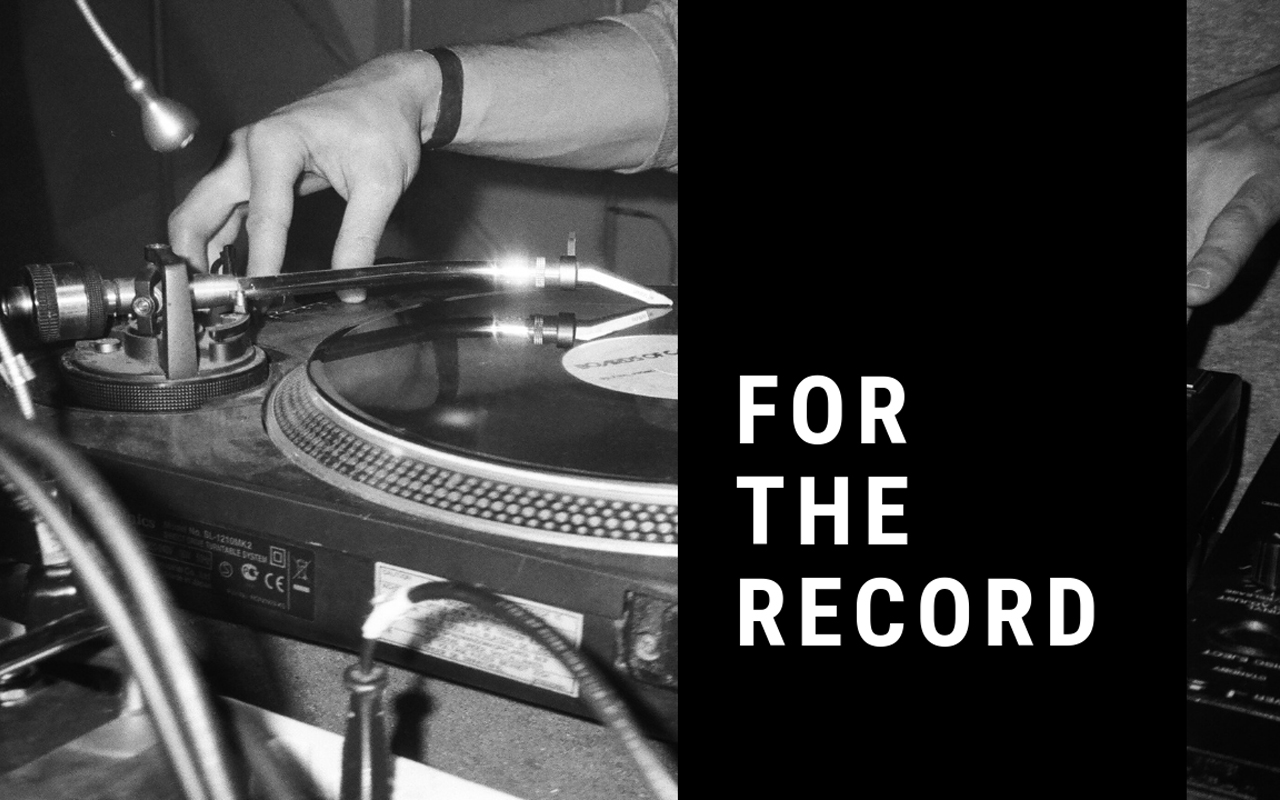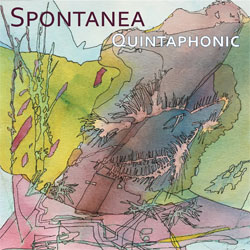
Spontanea
Quintaphonic
RIGHT BRAIN RECORDS

Consisting of Scott Schaffer (bass), Carol J. Levin (electric harp), Kenny Mandell (saxophones, flutes), Matthew Benham (guitar), and Colorado-based James Hoskins (cellist), the improvisation ensemble Spontanea has only played a handful of times live. Shortly before the pandemic, however, they were able to record a follow up to their last release, 2020’s spacey Chromasonic (also on Schaffer’s independent label Right Brain Records). Their newest presents another superb collection of improvisations—the quintet’s collective searching, charged with the taut motion of uncertainty, could not have been more timely.
Hoskins sets the scene on the opener, “Inverted Rainbow,” with a long, melancholy arco tone. A specialist in Mediterranean string music, Hoskins provides a lyrical counterbalance to the group’s wanderings. Evoking the shakuhachi with breathy flute harmonics, Mandell adds a spray, like plays of light off water, as Benham’s eddying guitar effects return their reflections. Schaffer comes in with scratchy cords on the mandola, while the group’s caution gives way to the stream of events—almost imperceptible interactions between players that mount like leaves stuck in water.
The quintet’s instruments intertwine on “Svaha,” a spine-tingling group drone like a glance down a chasm. Benham processes industrious shredding as Levin picks pentatonic melodies, the swirling plunge wired with Mandell’s percussion hits, until a slight chord barely marks the surprising end. Smaller group pieces like “Dos Espadas,” a slow-branching study in tonal parallels by Mandell and Hoskins, demonstrate the well-tuned camaraderie of the group. “Tres Holas” matches string timbres with fretless bass, the electric guitar’s hall of mirrors, and the sudden plucked splash of Levin’s harp. Ambitious within the small scale of their pieces, the improvisors are able to convene intricate parallels out of nowhere, a higher reason of the indeterminate.
“Primordia Discordia” dissociates this process in a clever staging of harmony’s antinomies. Beginning with a sunny dance of cello and harp, metal shreds and overblown sax squeals enter like an afterthought, only to disrupt the tranquil setting with their own jubilations. Like the group’s eclectic approach to instrumentation and timbre, the group’s sense of humor matches their collaborative concentration. Levin, who often adds effects to her instrument, easily fits the harp’s to Mandell’s classically avant-garde blowing.
For the remarkable last track “Quintaria,” the group follows through a delicately drifting, uneasy mood, faint as semi-darkness before day’s end: as a broad cello melody slowly glistens, odd sounds set in like shapes in the dusk. It’s only from a long-sustained and developed intimacy that the quintet can summon, so gradually and carefully, the diffused gestures of this lasting instant, to show time coherent by its dispersal. Here, as in the natural world, the conditions and relationships that make this perception possible are a precious epiphany. –Ian Gwin